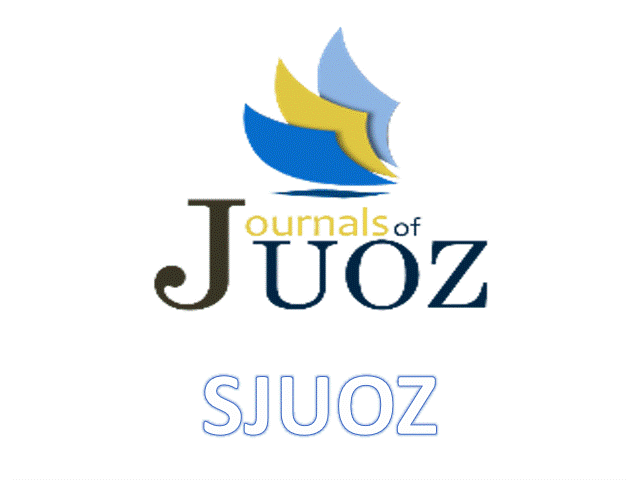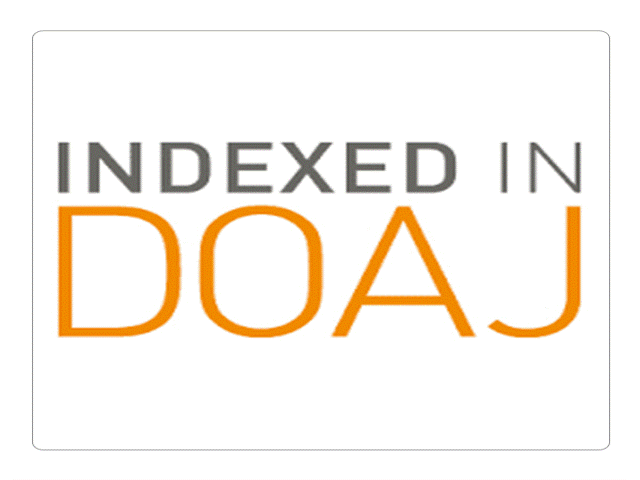A STUDY OF GLUCOSE-6-PHOSPHATE DEHYDROGENASEDEFICIENCY AMONG CHILDREN ATTENDING THE EMERGENCY HOSPITAL IN ZAKHO CITY-KURDISTAN REGION, IRAQ
DOI:
https://doi.org/10.25271/sjuoz.2023.11.4.1156Keywords:
Glucose-6-phosphate dehydrogenase deficiency, (100) GaAs, hemolysis, Infants and Children, Zakho, Kurdistan-IraqAbstract
Background: G6PD deficiency, which affects 400 million individuals globally, is an X-linked hereditary enzymopathy that causes acute hemolysis after exposure to specific oxidative agents such as fava beans, more than 37 drugs, and infections viral or bacterial. Neonatal jaundice worsened by kernicterus is one of the condition's significant consequences. It can be prevented by avoiding the oxidative factors that cause a hemolytic episode alongside neonatal screening programs for early detection of afflicted individuals.
Objectives: This research aimed at investigating the variability in clinical and biochemical manifestations among children with G6PDD. This is the first study to be carried out in the Zakho area.
Methods: A cross-sectional study was used, recruiting 112 children attending Zakho Emergency Hospital from January 2022 to April 2023. Laboratory aids involved in obtaining CBC, liver enzyme activities, and blood grouping were all investigated. The IBM SPSS 26 program was used to analyze the obtained data.
Results: There was no statistically significant difference between male and female patients in terms of age, time of admission, hemoglobin level, WBC count, and liver enzymes. The majority of cases who visited Zakho Emergency Hospital within 72 hours of exposure to the triggering agent were males (67.9%), with the most common clinical features being jaundice, dark urine, and abdominal pain.
Conclusion: In this study, the three main symptoms in G6PD deficient patients with acute hemolysis were pallor, jaundice, and black urine. These signs appeared several hours or even days after consuming fava beans. The primary clinical symptoms and the patient's gender, family history, or prior newborn jaundice were not related, according to our research.
Downloads
References
Al-Imam A. Digital epidemiology and geographic mapping of G6PD deficiency: retrospective analytic of trends database existing on the surface web. Asian Journal of Medical Sciences. 2018 Aug 31;9(5):57-61.
Al-Musawi BM, Al-Allawi N, Abdul-Majeed BA, Eissa AA, Jubrael JM, Hamamy H. Molecular characterization of glucose-6-phosphate dehydrogenase deficient variants in Baghdad city-Iraq. BMC blood disorders. 2012 Dec;12:1-6.
Al-Allawi N, Eissa AA, Jubrael JM, Jamal SA, Hamamy H. Prevalence and molecular characterization of Glucose-6-Phosphate dehydrogenase deficient variants among the Kurdish population of Northern Iraq. BMC Hematology. 2010 Dec;10:1-8.
Cappellini MD, Fiorelli GE. Glucose-6-phosphate dehydrogenase deficiency. The lancet. 2008 Jan 5;371(9606):64-74.
Nkhoma ET, Poole C, Vannappagari V, Hall SA, Beutler E. The global prevalence of glucose-6-phosphate dehydrogenase deficiency: a systematic review and meta-analysis. Blood Cells, Molecules, and Diseases. 2009 May 1;42(3):267-78.
Kashmoola MA, Eissa AA, Al-Takay DT, Al-Allawi NA. Molecular characterization of G6PD deficient variants in Nineveh Province, Northwestern Iraq. Indian Journal of Hematology and Blood Transfusion. 2015 Mar;31:133-6.
Koromina M, Pandi MT, van der Spek PJ, Patrinos GP, Lauschke VM. The ethnogeographic variability of genetic factors underlying G6PD deficiency. Pharmacological Research. 2021 Nov 1;173:105904.
M Frankool W, Jawad Al-Tu F. Molecular basis of G6PD deficiency in hyperbilirubinemic neonates in middle Euphrates Province: Iraq. Kerbala Journal of Medicine. 2010 Dec 28;3(7):867-81.
van den Broek L, Heylen E, van den Akker M. Glucose‐6‐phosphate dehydrogenase deficiency: not exclusively in males. Clinical case reports. 2016 Dec;4(12):1135.
Al-Temmemy RA, Al-Jumaily EF. Identification of Mediterranean mutation in the G6PD gene on molecular level in Iraqi population. Journal of Biotechnology Research Center. 2009 Jun 1;3(2):90-9.
Pamba A, Richardson ND, Carter N, Duparc S, Premji Z, Tiono AB, Luzzatto L. Clinical spectrum and severity of hemolytic anemia in glucose 6-phosphate dehydrogenase–deficient children receiving dapsone. Blood, The Journal of the American Society of Hematology. 2012 Nov 15;120(20):4123-33.
BEHJATI AS, Nikkhah A, Sedaghat M. The association between G6PD deficiency and total serum bilirubin level in icteric neonates. [Internet]. Iran: Iranian Society of Pediatric Hematology & Oncology; 2007. 4(4): 233-235. Available from: http://www.ijpho.ssu.ac.ir/article-1-45-en.html
Beutler E. G6PD: population genetics and clinical manifestations. Blood reviews. 1996 Mar 1;10(1):45-52.
Sirdah MM, Al‐Kahlout MS, Reading NS. National G6PD neonatal screening program in Gaza Strip of Palestine: rationale, challenges and recommendations. Clinical genetics. 2016 Sep;90(3):191-8.
AL-EZZİ Jİ. Screening for G6PD Enzyme Deficiency Among Children aged Five Years and Below in Diyala Province/Iraq. Pediatric Practice and Research. 2019;7(2):9-14.
Luzzatto L, Ally M, Notaro R. Glucose-6-phosphate dehydrogenase deficiency. Blood. 2020 Sep 10;136(11):1225-40.
Ahmed SN. Do favic patients resume fava beans ingestion later in their life, a study for this, and a new hypothesis for favism etiology. Hematology/Oncology and Stem Cell Therapy. 2013 Mar 1;6(1):9-13.
Al-Sweedan SA, Jdaitawi H, Khriesat WM, Khader YY, Al-Rimawi HS. Predictors of severe hemolysis in patients with glucose-6-phosphate dehydrogenase deficiency following exposure to oxidant stresses. Hematology/oncology and stem cell therapy. 2009 Apr 1;2(2):354-7.
Al-Imam A. The enzymopathy of G6PD deficiency in Jordan: A demographic and biochemical analysis. Asian Journal of Medical Sciences. 2019;10(1):25-32.
Habibian N, Alipour A, Rezaianzadeh A. Association between Iron Deficiency Anemia and Febrile Convulsion in 3- to 60-month-old Children: A Systematic Review and Meta-Analysis. J Pediatr Hematol Oncol. 2019;41(3):191-197.
Penman ID, Ralston SH, Strachan MW, Hobson R, editors. Davidson's Principles and Practice of Medicine E-Book. Elsevier Health Sciences; 2022 Jun 20.
Luzzatto L, Nannelli C, Notaro R. Glucose-6-phosphate dehydrogenase deficiency. Hematology/Oncology Clinics. 2016 Apr 1;30(2):373-93.
Athab MF, Al-Zubaidy AS, Al-Momen HH. Favism Clinical Experience in Al-Elwia Pediatric Teaching Hospital in Iraq. International Journal of Science and Research (IJSR). 2017;6(9):991-5.
Ahmed SN. Do favic patients resume fava beans ingestion later in their life, a study for this, and a new hypothesis for favism etiology. Hematology/Oncology and Stem Cell Therapy. 2013 Mar 1;6(1):9-13.
Honar N, Javanmardi H, Saki F, Rezaeefard A, Shahriari M. Clinical Manifestations of Acute Hemolysis in Children with Glucose-6-Phosphate Dehydrogenase Deficiency in Fars Province, Iran. International Journal of Pediatrics. 2018 Apr 1;6(4):7489-94.
Hassan MK, Taha JY, Al-Naama LM, Widad NM, Jasim SN. Nos 1/2, 2003 La Revue de Santé de la Méditerranée orientale. Vol. 9, Eastern Mediterranean Health Journal. 2003.
Eissa AA, Haji BA, Al-Doski AA. G6PD deficiency prevalence as a cause of neonatal jaundice in a neonatal ward in Dohuk, Iraq. American Journal of Perinatology. 2021 May;38(06):575-80.
Al-Sweedan SA, Jdaitawi H, Khriesat WM, Khader YY, Al-Rimawi HS. Predictors of severe hemolysis in patients with glucose-6-phosphate dehydrogenase deficiency following
exposure to oxidant stresses. Hematology/oncology and stem cell therapy. 2009 Apr 1;2(2):354-7.
Parween W, Das AK, Sharma SK. -Evaluation of Liver function test in Glucose-6-Phosphate Dehydrogenase (G6PD) Deficiency Patients Consuming Fava Beans. Lancet. 2021 Aug 1;371:64-74.
Published
How to Cite
Issue
Section
License
Copyright (c) 2023 Farhad S. Armishty

This work is licensed under a Creative Commons Attribution 4.0 International License.
Authors who publish with this journal agree to the following terms:
- Authors retain copyright and grant the journal right of first publication with the work simultaneously licensed under a Creative Commons Attribution License [CC BY-NC-SA 4.0] that allows others to share the work with an acknowledgment of the work's authorship and initial publication in this journal.
- Authors are able to enter into separate, additional contractual arrangements for the non-exclusive distribution of the journal's published version of the work, with an acknowledgment of its initial publication in this journal.
- Authors are permitted and encouraged to post their work online.








